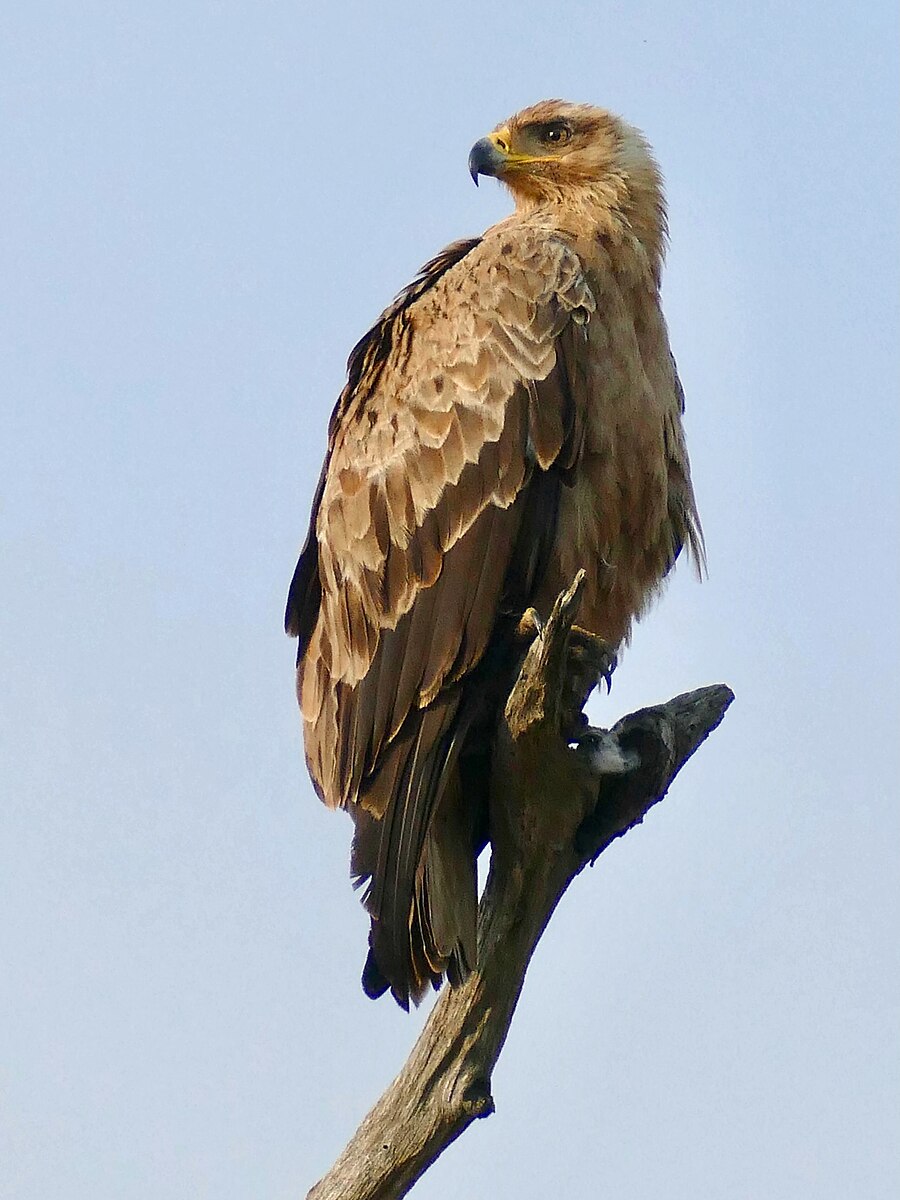Tawny eagles (Aquila rapax) are large birds of prey found primarily in Africa, inhabiting open dry habitats such as deserts, steppes, open grasslands, savannas, and mountainous regions. While these majestic birds have a range of vocalizations, they do not typically screech as loudly or as often as some other eagle species.
Tawny Eagle Vocalizations
Tawny eagles are generally a silent species, but they do have a few distinct vocalizations that they use in various situations:
- Barking or “Kwok Kwok”: Male tawny eagles will emit a crow-like barking or “kwok kwok” sound when displaying to a female or when they are agitated.
- Chittering Whistle: Tawny eagles have a more subdued vocalization, a chittering whistle, which consists of short, staccato sounds, almost as if they are wheezing words to each other in a rapid cadence.
- Other Sounds: Tawny eagles may also make other soft, low-pitched calls, such as grunts or hisses, particularly when interacting with their mate or defending their territory.
Comparison to Other Eagle Vocalizations
 Image source: Tawny Eagle by Bernard DUPONT
Image source: Tawny Eagle by Bernard DUPONT
The iconic “SCREEEE!” sound that is commonly associated with eagles is actually not from a tawny eagle, but rather from a red-tailed hawk. Tawny eagles have a much more muted and less frequent vocalization compared to the high-pitched screeching of some other eagle species.
| Eagle Species | Vocalization |
|---|---|
| Tawny Eagle | Barking, chittering whistle, soft grunts and hisses |
| Red-tailed Hawk | High-pitched “SCREEEE!” |
| Bald Eagle | Loud, piercing screams |
| Golden Eagle | Shrill, whistling calls |
Factors Influencing Tawny Eagle Vocalizations
There are several factors that can influence the vocalizations of tawny eagles:
- Breeding Season: Tawny eagles may be more vocal during the breeding season, as they use their calls to attract mates and defend their territory.
- Aggression or Distress: Tawny eagles may emit more pronounced vocalizations, such as the barking or “kwok kwok” sound, when they are feeling threatened or agitated.
- Communication with Mates: Tawny eagles may use their softer, more subdued vocalizations, like the chittering whistle, to communicate with their mates and coordinate their activities.
Tawny Eagle Behavior and Habitat
Tawny eagles are diurnal, meaning they are active during the day, and they tend to occupy the same territory for many years, sometimes even decades, in pairs. They are strong fliers and can soar at elevations of 600 – 2400 meters (1,968 – 14,760 feet), often perching on a tree or telegraph pole during the day while scanning the ground for food.
Conclusion
In summary, while tawny eagles do have a range of vocalizations, they do not typically screech as loudly or as often as some other eagle species. Their vocalizations are more subdued, consisting of barking or “kwok kwok” sounds, chittering whistles, and other soft grunts and hisses. The iconic “SCREEEE!” sound associated with eagles is actually from a red-tailed hawk, not a tawny eagle. Understanding the unique vocalizations and behaviors of tawny eagles can help us appreciate the diversity of these magnificent birds of prey.
References:
– Tawny Eagle Vocalization on YouTube
– List of Animal Sounds
– Common Barn Owl Vocalization
– Tawny Eagle Information
– Eagle Screech Discussion

